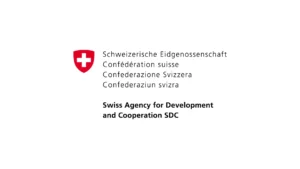Be clear why you seek to measure your impact
Before engaging in any measurement work, it is of the utmost importance to clarify the strategic reasons you consider for a set of activities to measure the impact. The approach and focus of your impact measurement work will vary depending on whether your motivation is extrinsic (e.g. meeting the reporting expectations of a funder), intrinsic (to generate insights for innovation and improvements) or a mix of both.
Impact measurement can be pursued for the purpose of external reporting to tap into public or private funding sources or show accountability to specific stakeholder groups. This means accuracy of data, transparency on assumptions and the user-friendliness of the deliverables matter above anything else. You absolutely want to avoid making false or erroneous claims when communicating about your impact, to avoid contributing to the issue of impact/green washing plaguing the business world. You will also want to deliver your message in a way that can be perfectly read and understood by your target audience.
However, when impact measurement is pursued for the purpose of internal management and decision-making, then your focus should go to generating qualitative and quantitative data on stakeholders and effects that matter most to your enterprise right now. This means investing your time and resources to only measure what you need to take important decisions and unlock value creation potential. In the latter case, the amount of evidence that needs to be collected depends on the strategic importance of the data. The more the data matters for the success of the company, the more efforts needed to be invested in gathering useful data. The mantra to keep at the top of your mind at all times is “enough precision for the decision”, which means – only invest efforts in what helps you and your enterprise forward.
Failing to properly define your impact measurement scope will invariably result in one of the following pitfalls:
- Risk of never starting: Be aware of common myths surrounding impact measurement. Like the notion of it being too early or too late, expensive, or time-consuming to get started with it. The business case for measuring impact is compelling. Collecting impact data provides valuable intelligence to iterate and improve the quality of your products. Engaging stakeholders in the process offers rare opportunities. Like creating deep relationships with customers, partners, and unlock new value creation possibilities. Reporting impact can also open doors to new financial and non-financial resources.
- Inefficient distribution of resources: There is a potential risk associated with allocating an excessive amount of resources towards burdensome data collection processes, primarily aimed at ensuring statistical accuracy – when this is actually not necessary.
- Losing momentum & demotivation: Lack of clarity of impact measurement goals will lead to unrealistic expectations & delusion in the process. This can erode the enthusiasm and commitment of employees and stakeholders. Which can lead to a loss of momentum and demotivation in the practice. Which may cause impact measurement to be abandoned altogether, keeping you in a state of ignorance and wishful thinking.
Integrate measurement work into core business processes
There’s a tendency to see impact measurement and management as an activity one carries out once per year. This approach not only reduces the ability of your enterprise to systematically collect strategic data, it also makes the whole process seem like it is an add-on to your core business. Doing so, supports the development of a so-called culture of “impact management”. Where collecting impact evidence for reporting and decision-making is deeply embedded in your operating model.
Concrete tips to bake impact measurement into your core processes:
- Take advantage of existing contact points with priority stakeholders to embed impact measurement-related questions. Impact metrics and questionnaires should as much as possible be integrated within existing touchpoints and contacts with stakeholders, such as: customer meetings and reviews, conferences, advisory board meetings, internal project management meetings, etc.
- Leverage existing technologies to collect, aggregate, analyse and report impact results. Everything starts with Excel or your current CRM. Specialised software solutions can generate benefits when the amounts of data collected are truly significant or when there are many different data sources.
- Empower your team by providing training to employees on impact measurement. Foster an impact learning culture into your team. So the seed of impact management so it can flourish into a robust tree that contributes to your enterprise’s success. Training can help develop the awareness, knowledge and skills needed to leverage impact data for decision making and reporting purposes.
Engage your stakeholders in the process
Most impact measurement projects remain high-level, theoretical exercises because they fail to involve stakeholders. Engaging stakeholders in the process of identifying positive and negative impacts, and generating quantitative evidence is gold dust.
This is where the magic happens. Where you generate trustworthy and meaningful insights but also embrace the possibility that unexpected outcomes are happening. In reality, most social innovations are developed and deployed based on a set of assumptions nested in the minds of a few project developers. When these assumptions are not put to test – that is when stakeholders are not involved to testify about what is happening or not, then the probability of the solution delivering the intended results is significantly reduced.
Involving stakeholders in impact measurement is a must-have that comes with some additional complexity. You will need to design a pragmatic solution. In order to pull insights, taking your relationship with each stakeholder into account as well as their literacy skills and capabilities. Last but not least, involving stakeholders should go hand in hand with two-way accountability. You need them to evidence the impact of your work. While they need you to transparently communicate the impact for the results of your work. Transparency and honesty will build strong foundations for sustained collaboration and loyalty of your stakeholders.
Interested in finding out more about impact measurement practices? Here at Efiko, we provide practical interactive and self-paced training courses! To help you develop the knowledge and skills needed to measure & manage impact. Check out our course section below for more information!
These courses might interest you

Impact Measurement: Applying the Principles of Social Value and SROI

Designing a Robust Theory of Change








